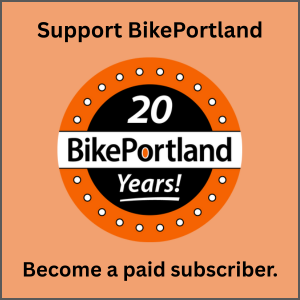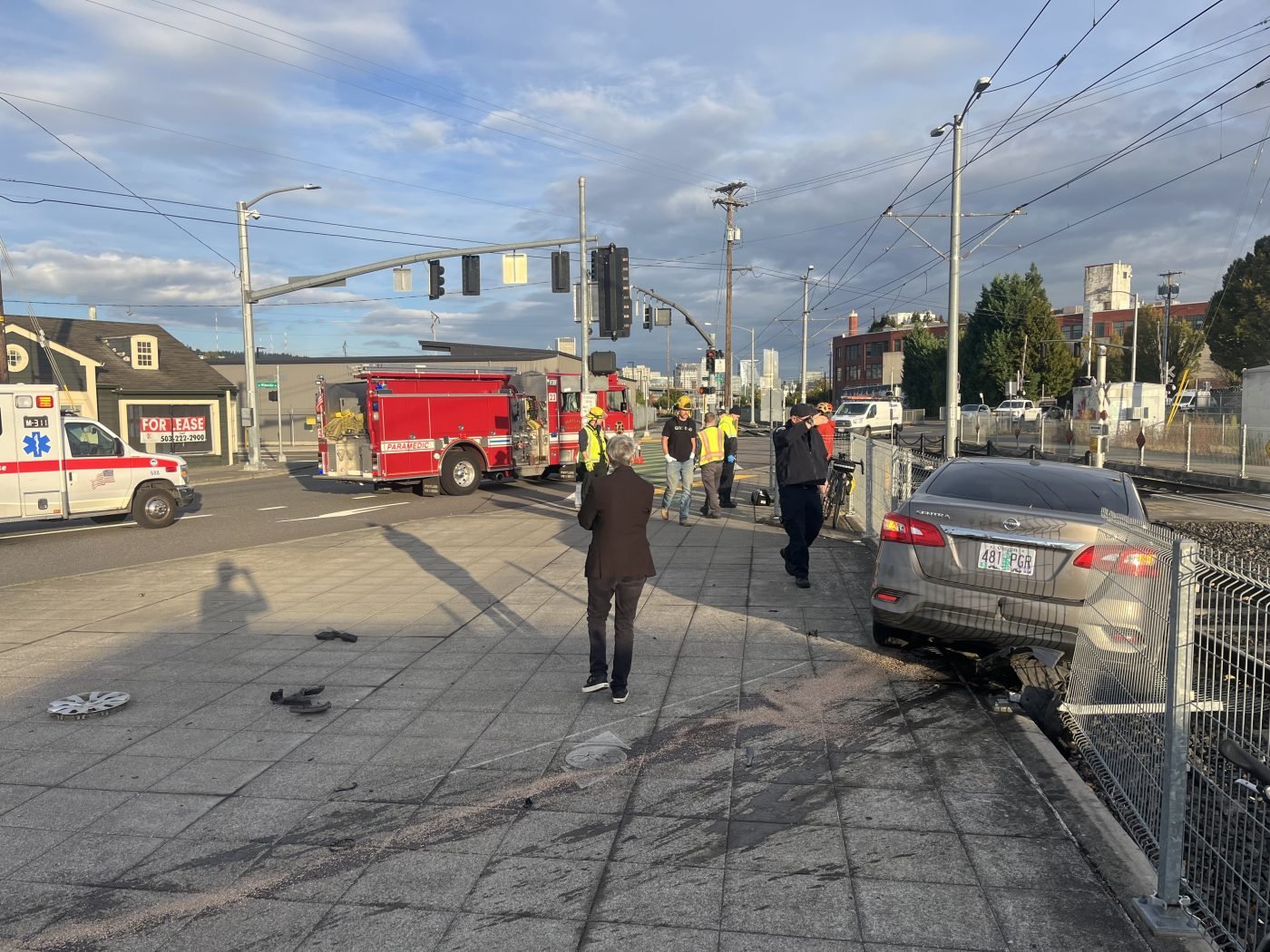
On Tuesday morning around 8:00 am, commuting calm was shattered on one of Portland’s busiest bicycling corridors when a driver careened off the road, flew across the bikeway, and slammed into a metal fence, leaving a trail of broken debris in their wake. It happened on Southeast Milwaukie where it crosses the rail tracks at SE 12th.
I heard about it from several people and my first response was: Here we go again. There has been a disturbing drumbeat of drivers failing to control their vehicles and driving them into spaces that are expected to be carfree.
In the past month or so I’ve reported on several serious incidents. In early August, a man drove onto the sidewalk and killed someone on NE Martin Luther King Jr. and then hopped another median before coming to rest after a head-on collision with another driver. Later that month a suspected car thief sped across the (carfree) Tilikum Crossing Bridge. On September 17th, a driver intentionally drove through the Holman Pocket Park, only to be stopped by concrete bollards. Then on Sunday I posted photos of a driver who crashed into a planter area on the sidewalk of SW 1st and Main.
These are just a few recent examples of what feels like an out of control epidemic of dangerous and reckless driving on Portland streets. It’s a violent byproduct of a system where cars and their drivers have too much freedom to destroy and disrupt. If there’s a war on our streets, this is the closest thing to it.
“It’s infuriating that cars are increasingly careening into places they don’t belong,” said BikePortland reader Andy F., who was nearly hit by that driver who crashed into the sidewalk-level bike lane on SE Gideon Tuesday morning.
I asked Andy to share his experience. His account below and photos from the scene are chilling:
“A driver traveling northbound on Milwaukie Ave at high speed lost control near the Clinton/Gideon rail tracks intersection. He struck and knocked down a metal traffic light pole, then careened onto the curb, through fencing, and onto the MAX tracks.
I heard a loud noise (the driver first knocking down a metal traffic light pole). I thankfully was able to quickly move out of the way prior to the driver careening onto the curb, through the fencing next to the rail, and onto the tracks themselves. I escaped a direct hit by at most seven feet. It’s remarkable no other bikers/pedestrians were struck. I saw/heard no attempt to brake before he mounted the pedestrian path. I have no estimate for speed, but it was clearly high velocity given the damage and airbag deployment. If he had hit someone he would have seriously injured, or more likely killed them.
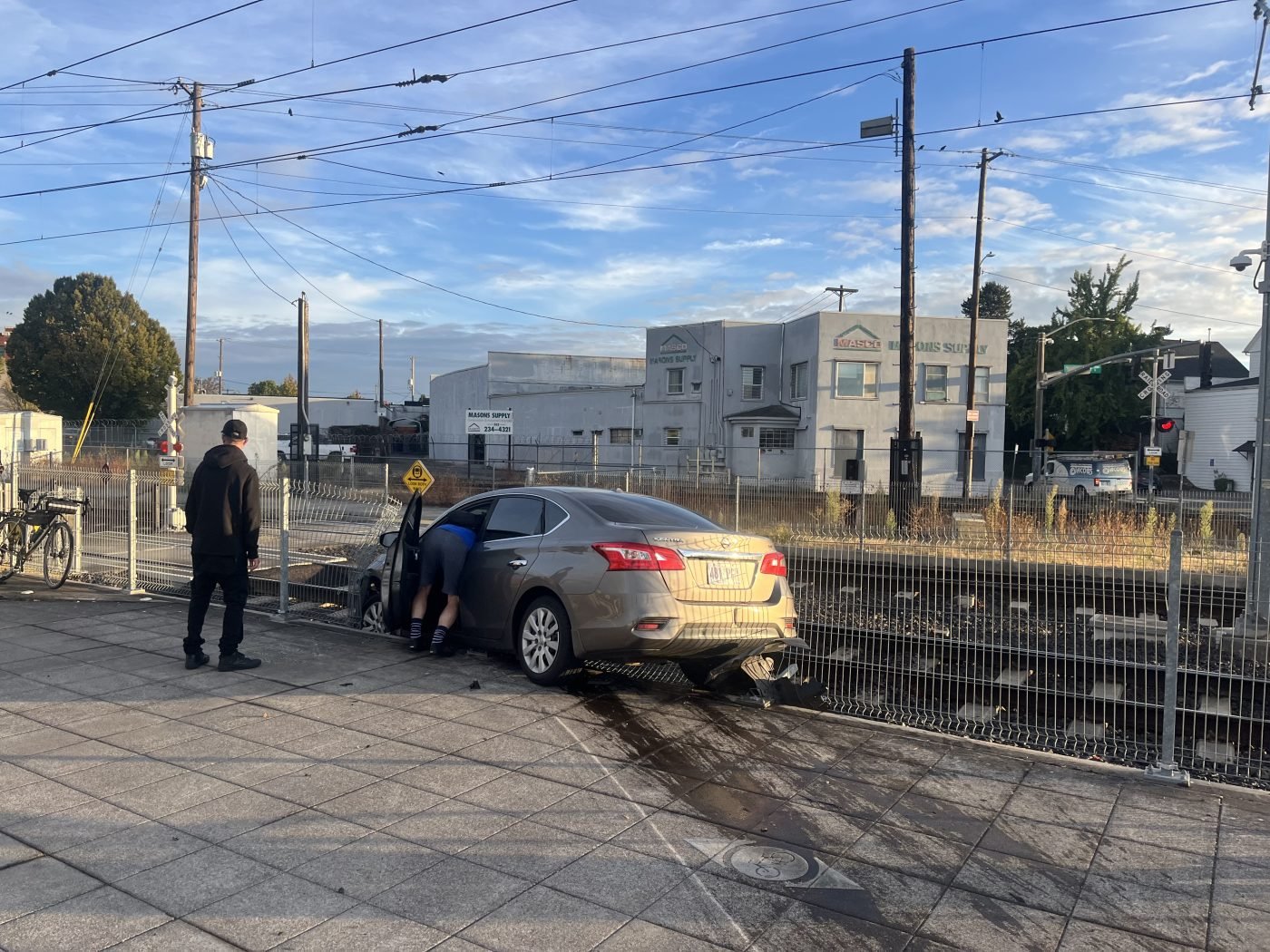
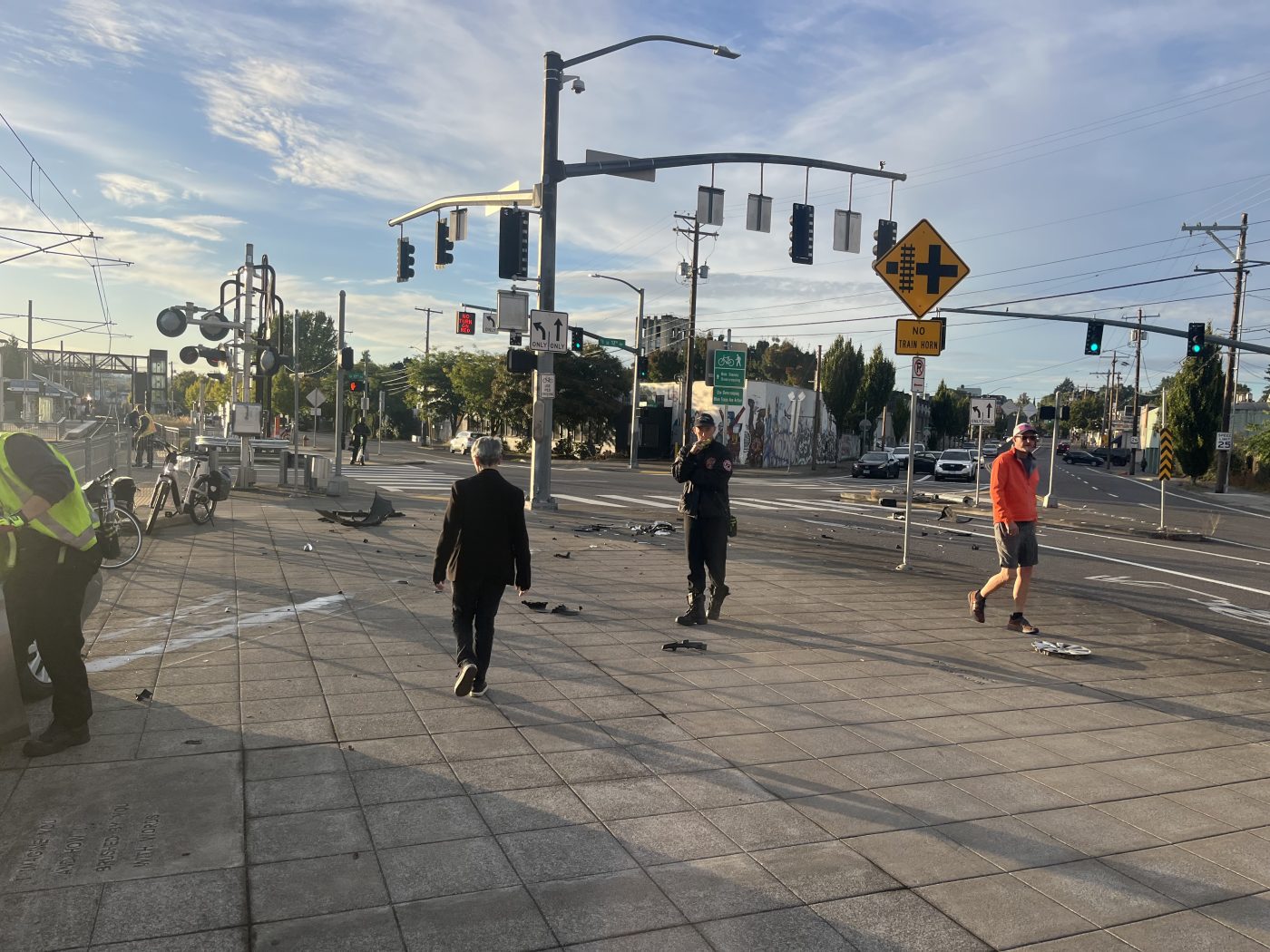
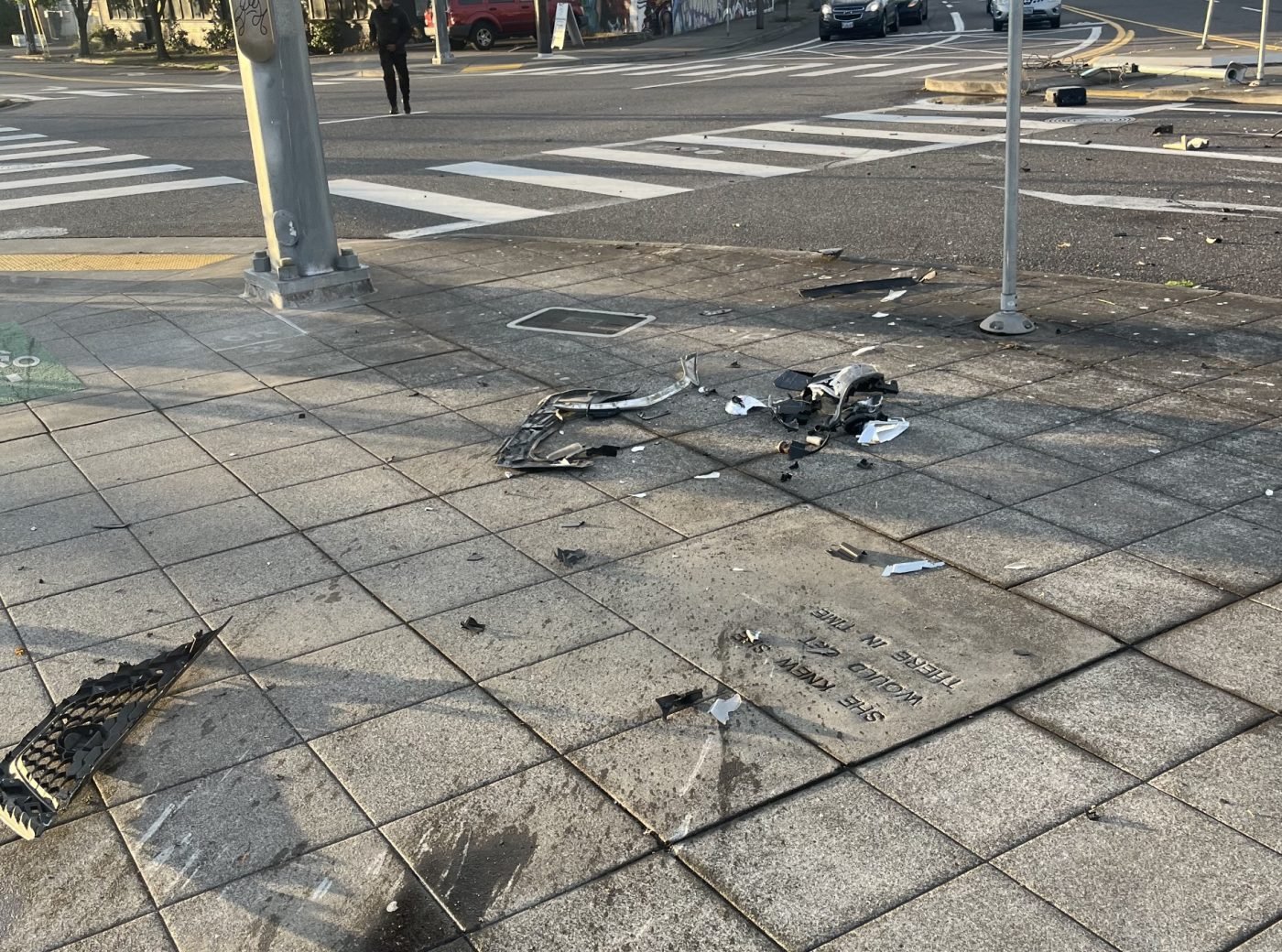
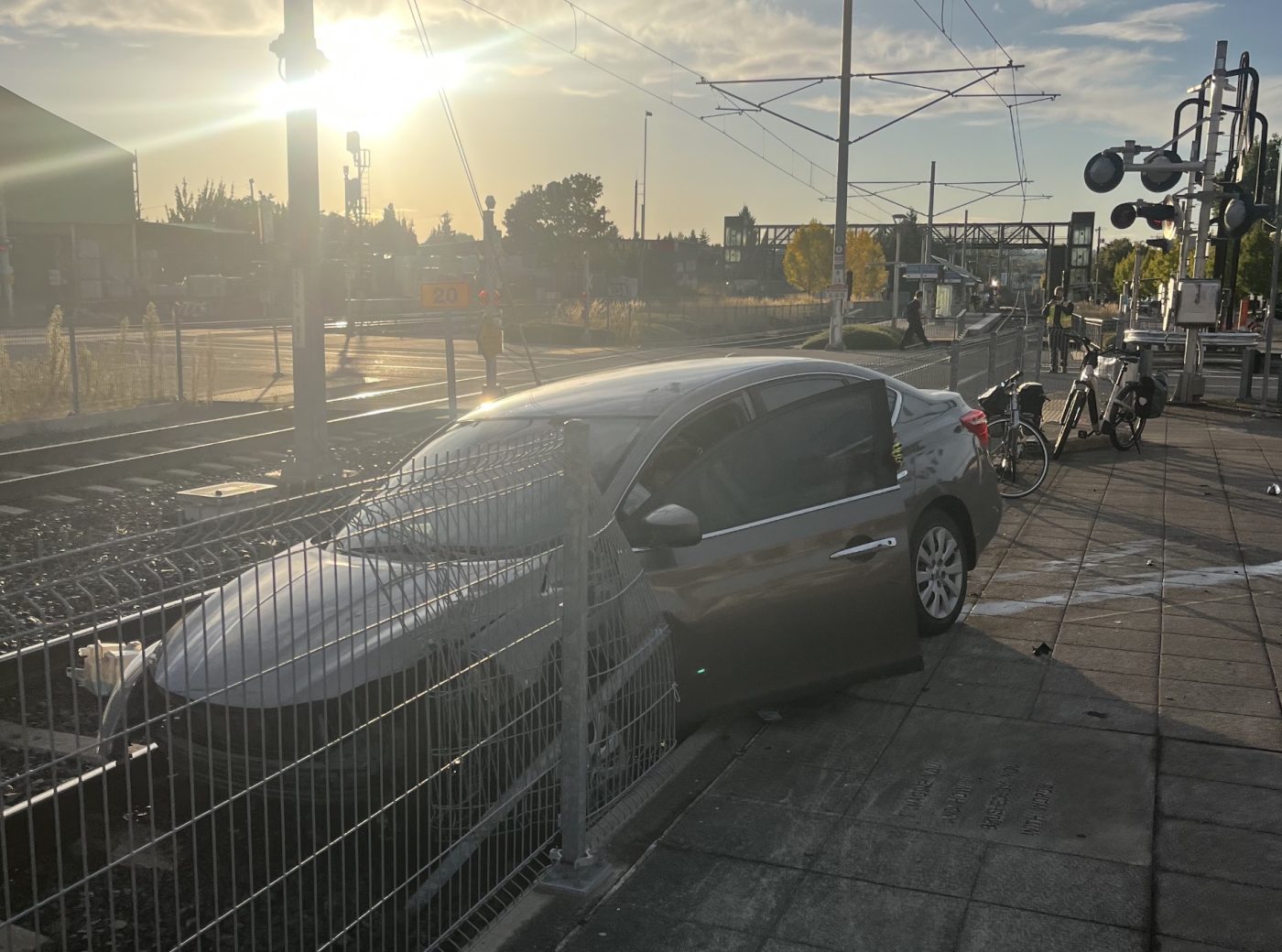
Because the driver now was on the tracks with a MAX train heading Eastward (other bikers were able to flag the train to stop thankfully) — and after ensuring area was safe — I was able to speak to the driver to get his permission to help and open door (very tinted windows made it difficult to visually determine safety) and pull him from the car. A young man, very confused and understandably disoriented. The steering wheel and side-curtain airbags all deployed. It’s easy to assume he was intoxicated, however it’s also totally possible he had a medical event (seizure, cardiac episode, etc.). Irrespective of those circumstances, he clearly was driving way too fast. Fire and EMS took a very long time to arrive. 911 repeatedly dropped my calls, and response times felt very slow, which was frustrating.
A huge shout out to the staff and workforce at Urban Alchemy who (were working working nearby and) were some of the first to the scene bringing Narcan and first aid kits. It was heartening to see the direct caring actions of people biking-by and local businesses — helping make sure the driver was safe and stable, flagging down the MAX train and communicating with EMS, etc.”
In addition to telling us what happened, Andy also wanted to share a personal message about how the incident has impacted him.
“I used to exclusively commute to work by bike years ago. But as I’ve moved further away from the city core and other life circumstances, I had largely stopped. I’ve been ashamed about that for a good while, missing the energy and liberation of biking and connecting with outdoors and Portland again. My choice to “fall out” of bike commuting has not only been a huge physical and mental health loss for me, but totally at odds with my values — wanting to minimize the negative impact my life has on the environment and local communities.
A few months ago I finally bit-the-bullet and bought an e-bike (a total game changer!) and have been so proud to finally be biking again. It’s been transformative just like it was years ago. It changed my work days and my general outlook substantially. And with the e-bike, going from Southwest Portland to outer Southeast is totally doable!
After Tuesday’s incident, I hope I don’t lose my bike-commuting inertia. I hope it doesn’t deter others from choosing more healthy ways of getting around. With that being said though, I don’t know if I can unconditionally recommend biking to/from work right now, especially more vulnerable or less experienced riders… Not with all the increasing road-rage and reckless driving. It’s great for those of us who feel confident on bikes, but it’s not accessible or safe for many people. That’s the unmeasurable tragedy to all this.
It’s infuriating that cars are increasingly careening into places they don’t belong. But it’s even more obnoxious the lethargic responses and sense of resignation from our elected officials. It’s not a moonshot to build infrastructure that can literally save and protect lives. How can we possibly encourage more people to ride bikes, or walk or jog, or do much of anything when they can so clearly see the car shrapnel and tire marks all over these paths? And after hearing and seeing all these near misses?
I’m grateful I wasn’t hit, and even more grateful I didn’t have to watch someone else killed. It was that close.
Please for the love of God, chill the f*** out in your cars and demand more from your elected officials. Maintaining the status quo is not good enough.”
Historically, policymakers have responded to incidents like this as if they are unpreventable one-offs with no systemic solution beyond the slow march toward hardening the system for bicycle users. But it’s clear we don’t have enough physically protected infrastructure. What we need is nothing short of a usable network of bike lanes that is either completely off-street or separated from drivers with tall, immovable concrete curbs — combined with street designs and system of enforcement and legal consequences that make it clear what type of behavior is expected from car users. We will only move the needle for cycling in Portland when our city, county and state jurisdictions provide that level of protection and we see more local leaders directly address the urgency of this crisis.



